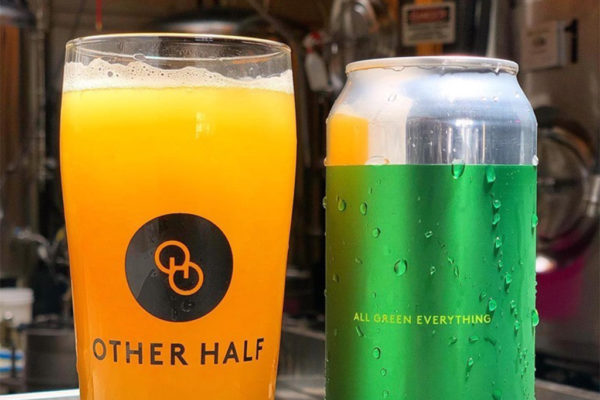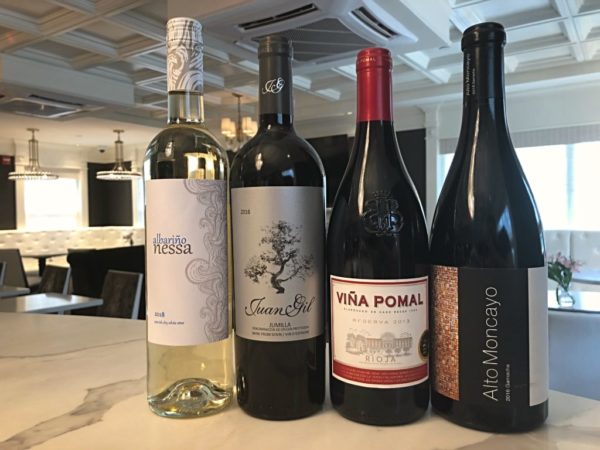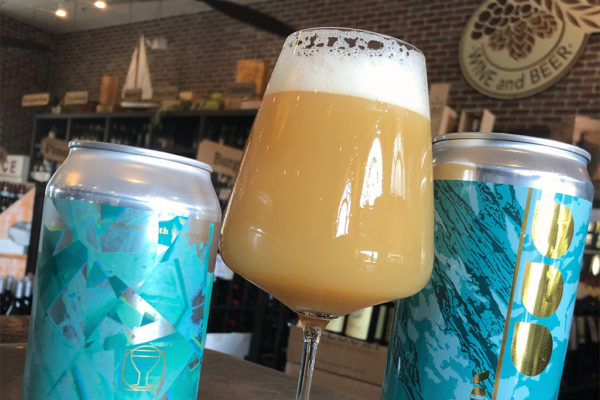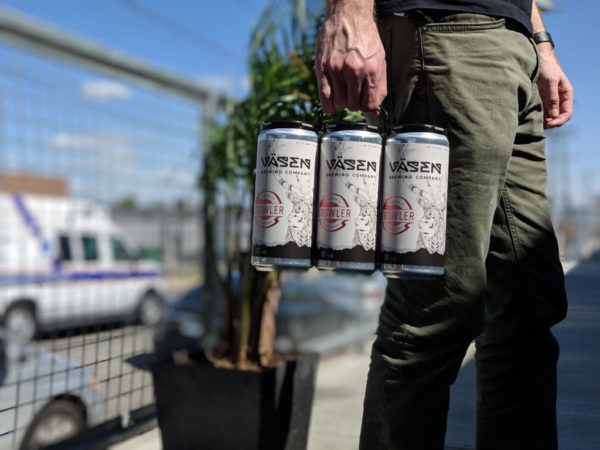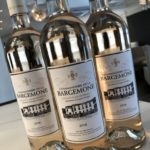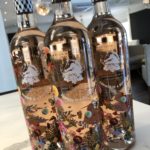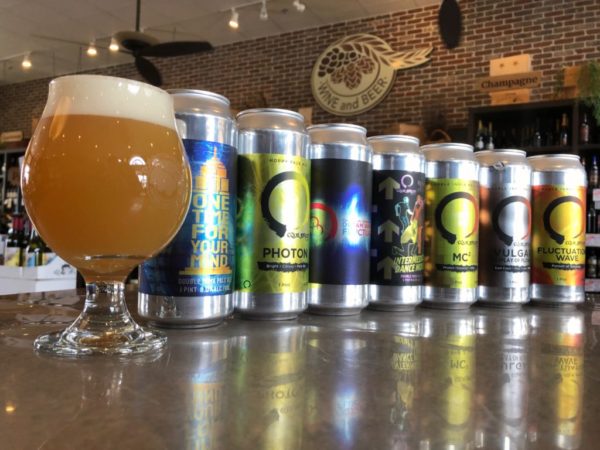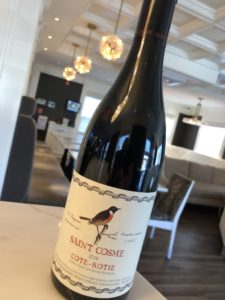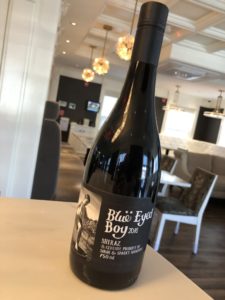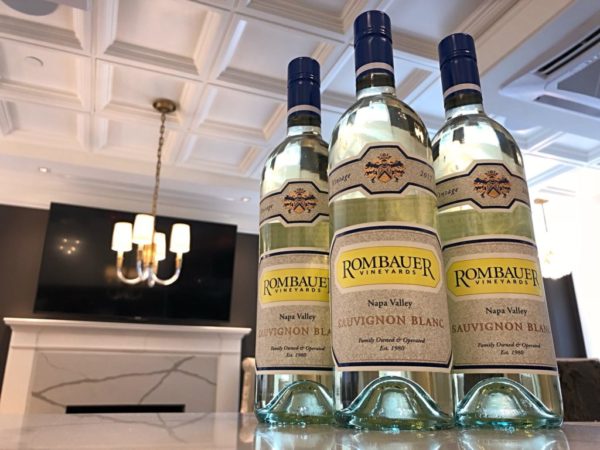Editor’s Note: This biweekly column is sponsored by Dominion Wine and Beer (107 Rowell Court, Falls Church). This week’s Guide is written by David Birks and Arash Tafakor of Dominion Wine and Beer.
In 2012, Other Half founders Matt Monahan, Sam Richardson and Andrew Burman signed a lease on a warehouse in Brooklyn, New York.
Matt and Adam were working in the restaurant industry as aspiring chefs with a serious side passion for home brewing. Sam, beginning his brewing career at a small brewpub in Oregon, then to Pyramid Brewing and later on at Green Point Brewing in Brooklyn, New York where the three met and became close friends.
Their collective vision and goal, ability to utilize a culinary approach, creativity and unique approach to branding and design brought a level and quality of beer never before seen in New York City.
Sounds easy, right? Not exactly. New York wasn’t exactly ready for the craft beer boom back then. Craft breweries were considered manufacturers of products. As with that designation, they were subject to strict zoning laws that delayed the opening of their brewery until 2014.
Founders Matt, Sam and Adam found a way to weather the storm for almost two years and what they’ve been able to create, can be only described as a rose that grew from the concrete. They’ve recently opened up a second location, in Rochester, New York. Same idea; brew world-class beer, with a vibrant taproom experience. Business seems to be going quite well for the trio, and rightfully so.
Other Half is a true powerhouse in the craft beer world. Like clockwork, frequently enjoying long lines for their beer and a bustling taproom. Their success can be credited to a combination of clever artwork, branding, design and intelligent marketing, combined with constantly evolving and innovating brewing techniques. Other Half is always ahead of the curve.
Matt, Adam and Sam have become experts in seeking out the highest quality hops and ingredients from all over the world. Highly respected within the industry for their talents, frequently brewing collaborative projects with the best of the best. At the end of the day brewing is cooking and cooking is brewing, and these guys are producing at a Michelin Star quality level.
Don’t believe me? Read this article in the New York times which speaks to how long people are willing to wait in line just to get their hands on some of Other Half’s beers.
Editor’s Note: This biweekly column is sponsored by Dominion Wine and Beer (107 Rowell Court, Falls Church). This week’s Guide is written by Arash Tafakor of Dominion Wine and Beer.
Spain has arguably one of the most amazing arrays of grape varietals in the world.
With over six hundred types of wine making grapes to choose from, Spanish wine makers have an arsenal of choices to make that perfect wine, and Spanish wine comes close to perfection.
Going to your local wine store’s Spanish section could be a bit overwhelming. Spanish wine varietals are confusing even for me. I’m going to write a quick guide to help you navigate and understand Spain’s most popular varietals, but before we can go into that a consumer must first interpret Spanish labeling terms.
Most Spanish wines are labeled based on how long the wine is aged and the region the wine comes from. If a label has the term Joven, this indicates the wine has not been aged in oak.
The term Crianza means red wines are aged at least two years with a minimum of six months in oak barrels, Reserva means red wines are aged at least three years with a minimum of one year in oak barrels, and the term Gran Reserva means the wines are aged at least five years with a minimum of eighteen months in oak.
Also on the label of Spanish wine is the region the wine comes from. Premium wine regions of Spain include Rioja, Ribera del Duero, Priorat, Catalunya, Rias Baixas, Jumilla and many other smaller regions.
Here are some of Spain’s most popular grape varietals:
Tempranillo
Known as Spain’s most popular red varietal, this is the main grape in Spain’s Rioja region. This grape gives full or medium-bodied reds, with medium acidity, medium tannins and red fruit flavors. One of my favorite Rioja’s that uses predominately Tempranillo is the 2103 Viña Pomal (by the glass at our wine bar upstairs).
This wine has been given over a year of oak ageing, making it a perfectly smooth balanced wine with powerful fruit flavors. Regions like Toro, Ribera del Duero and La Mancha also widely use Tempranillo in red wines.
Garnacha (Grenache)
Garnacha grapes are large thin-skinned grapes that ripen perfectly in hot, dry climates such as Spain’s. Garnacha wines are full bodied and high in alcohol content. Garnacha typically have red fruit character with spicy notes and a low amount of tannins. Garnacha is grown in many premium wine-growing regions of Spain such as Calatayud and Aragon.
My favorite Garnachas are the 2016 Espelt Garnacha and 2016 Bodegas Borsao Tres Picos. Both retail around 12 dollars and deliver excellent value and quality. If you don’t mind spending more, the 2016 Alto Moncayo Garnacha is a world class Spanish Garnacha.
Monastrell (Mourvedre)
Monastrell is the most significant grape of the region of Jumilla. Typically difficult to grow, Monastrell is a wine with high levels of tannin, high alcohol content and a slight sweetness. Monastrell’s are typically earthy with hints of herbs and very low level of fruit notes making it a rich savory wine.
My favorite Monastrell is the 2016 Juan Gil Monstrell. This wine is aged in French oak for one year making it a perfect wine that balances fruit, alcohol and oak tones.
Albarino
One of my favorite white varietals in the world, Albarino is grown in the Riax Baixas region of Spain. Usually unoaked, this grape variety gives light to medium-bodied wines with fresh green and citrus fruit and refreshing high acidity. Albarino pairs perfectly with any seafood dish as well as on it’s own for casual consumption.
My favorite Albarino is the 2018 Nessa Albarino. This fruit driven acidic white is light, crisp and extremely food friendly. Excellent alternative to your everyday whites such as Chardonnay, Pinot Grigio and Sauvignon blanc.
As always, these wines are available at Dominion Wine and Beer to go as well as upstairs at our wine bar. We pour Viña Pomal by the glass but others can be opened by the bottle with a small corkage fee.
Editor’s Note: This biweekly column is sponsored by Dominion Wine and Beer (107 Rowell Court, Falls Church). This week’s Guide is written by Arash Tafakor of Dominion Wine and Beer.
We’re quite impressed with Commonwealth, and have been for a while.
Since we opened Dominion Wine & Beer over 5 years ago we haven’t seen a brewery take Commonwealth’s approach to distribution. Some lucky breweries don’t ever have to sell their beer to a distributor, meaning their beer is not available in local craft beer stores.
They have enough demand to sell their beer straight out of their brewery and people will wait hours in line for those brews. Most breweries strive for that goal, but Commonwealth went about selling their high quality beer just a bit differently.
Since opening up in Virginia Beach, Virginia in 2015, founders Jeramey Biggie and his wife Natalie have created a craft beer distribution method rarely seen before.
So what makes Commonwealth so unique?
Their model is to brew the quality of beer people typically wait in line at breweries for, but predominantly distribute it to local stores and restaurants in Virginia, Maryland and D.C. On average, every two weeks, like clockwork, Commonwealth will distribute 4-6 new unique beers into our area.
Never have we seen something like this in distribution. With all of that said, Commonwealth has become an incredibly strong brand for us, as well as many others in the area.
Another unique quality Commonwealth brings is their creativity when it comes to the beer itself and the beautiful artwork and design of the labels they put on their cans. With the help of a self described “strategic drinks packaging design agency that builds creatively rare, commercially right brands” called Thirst Craft out of the United Kingdom, founder Jeramey Biggie gets exactly what he asks for.
“I want to visually see the flavors I taste in the can.” You can see some examples of this artwork on their Instagram page found here.
Next time you’re in your favorite bottle shop, make sure to check out what Commonwealth beers they have in stock. You will not be disappointed.
At Dominion Wine and Beer we will always have their most recent release of fresh Commonwealth brews.
Editor’s Note: This biweekly column is sponsored by Dominion Wine and Beer (107 Rowell Court, Falls Church). This week’s Guide is written by Arash Tafakor of Dominion Wine and Beer.
On Friday May 3 at 5 p.m. our friends at Väsen are releasing their canned beer for the first time!
Väsen Brewing started making their brew in Richmond, Virginia in 2017. Since then they have focused on “combining the experimental spirit that defines American craft beer with the rustic and funky flavors of Belgian farmhouse and sour ales.”
Their inaugural run of three beers will be available Thursday at the brewery — first spot to retail is right here at Dominion on Friday. The ultra-fresh new cans, days young, dropped at our door!
Available in cans by mid afternoon Friday are:
Nörse Double IPA
“This double-dry-hopped 8% ABV DIPA was conditioned on Citra, Mosaic and Amarillo hops to produce a complex, well-rounded hop character with hints of grapefruit, tangerine and pine. Traditional Norwegian Kveik yeast from a farm in northern Norway contribute complex aromas of orange peel, peach and white pepper, which combine with rich brown sugar and honey to balance this moderately bitter farmhouse-style ale.”
Guava Otter
“A Virginia Craft Beer Cup award winner. This funky, 5.5% ABV sour ale was conditioned on guava to impart bold tropical flavors. Salty. Sour. Delicious.”
Läger
5.1% ABV, malty, smooth and delicious. Our European-style lager combines the finest malts from the U.S. and Belgium with noble German hops to create a refreshing golden draught with a remarkably clean finish.”
On tap Friday by 5 p.m. All 3 can release beers, plus:
- Northern Equinox Hazy IPA
- Hefeweizen
- Mango Tango Otter Mango/Tangerine Gose
- Whiskery Walrus Buffalo Trace BA Stout
Come out Friday, grab some ultra fresh cans, enjoy a great list of drafts and hang for happy hour or dinner! We’ll be the exclusive retail spot with these cans through the weekend. Cheers to Väsen and their inaugural canning run!
For more info on Väsen, check out their Facebook page and website.
Editor’s Note: This biweekly column is sponsored by Dominion Wine and Beer (107 Rowell Court, Falls Church). This week’s Guide is written by Arash Tafakor of Dominion Wine and Beer.
Rosé wine sales in the U.S are increasing year after year. Why this change? Simply put, quality and affordability.
After decades of Americans categorizing any pink colored wine with the sweet White Zinfandel variety, the U.S wine consumer has discovered the light, dry, crisp and perfectly fruity rosé wine. Winemakers, instead of using excess red wine grapes to make Rosé, they are now growing those quality grapes specifically for rosé wines.
As winemakers start off with the intention of making rosé from the beginning, the quality of these wines has improved dramatically.
What makes rosés pink? A true rosé is not a blend of white and red wine. Instead, like red wine, rosé wine is made from red wine grapes. But instead of leaving the wine in contact with the pressed grape skin to ferment with the juice for an extensive period, rosé producers keep the skins in contact with the juice for only a brief period of time.
Then the pinkish juice is drained from the skins, resulting in a color ranging from a pale pink to a deep salmon or coral. Winemakers make rosé from the red grape varieties traditionally grown in their particular region, grapes best suited to the local soil and climate.
Rosés from the entire world typically display a range of colors, textures and flavors. Yet all rosés have some common characteristics: they tend to be bright with great acidity, fresh, crisp and dry. The most popular rosé producing region in the world is Provence, France. There, rosé is a part of everyday life, widely embraced as the best lunchtime, seaside and all occasion wine.
This spirit of Provence lifestyle has started to catch on. Wine makers from around the world are making more rosés than ever before as part of their wineries. Amazing dry style rosés are also being made from California to Virginia, and all at a great affordable price. With the spring and summer here, this is a great time to come in and try a fresh 2018 vintage dry rosé for any occasion.
Rosé food pairings: Rosé’s versatility really comes out when it comes to food pairings. You can almost drink a dry rosé with any meal. For international cuisines, rosé pairs well with spicy Asian dishes, Mexican, Italian pizza, sushi and even Indian curries.
American fare, rosé’s go well with burgers, salads and even soups and stews. With meat you can pair a rosé with any BBQ as well as ham, steak, turkey and veal. Fish and seafood; grilled fish goes extremely well with rosé as well as steamed fish and lobster.
Here are a two new 2018 vintage Rosé wines we recommend at Dominion Wine and Beer
Commanderie de la Bargemone Coteaux d’Aix en Rosé Provence, France 2018
The 2018 vintage Rosés from Southeast France were grown in ideal weather conditions according to the Vins De Provence association. This Rosé from a benchmark producer of the delicious, dry rosé for which Provence is famous, the Commanderie was founded by the Knights Templar in the 13th century, and is home to a proud viticultural tradition with more than 160 acres of sustainably grown vineyards. 91 points from Wine Enthusiast.
Wölffer Estate Summer in a Bottle Rosé Long Island, NY 2018
Easily our best-selling Rosé the past few years, Summer in a Bottle not only comes with a catchy name but also a beautiful package making it great for a wine for a picnic or an elegant dinner party.
Editor’s Note: This biweekly column is sponsored by Dominion Wine and Beer (107 Rowell Court, Falls Church). This week’s Guide is written by Arash Tafakor of Dominion Wine and Beer.
Making beer is no different than cooking food.
Cooking and brewing are no different than a chemistry experiment. Heating, freezing, mixing and blending are all processes used in the kitchen, brewery and the laboratory. So, what happens when two MIT graduates in environmental engineering come together to open up a brewery? An equilibrium of course.
When Ricardo Petroni and Peter Oates decided to open up Equilibrium in 2016 they set out to make better beer than the rest based on “scientific principles focused on balancing drinkability and massive flavor.”
“It’s about achieving equilibrium in each beer,” said Oates.
Did I mention these guys got their PhDs at MIT? Peter Oates literally started home brewing by building his own automated brewing system… making six batches of beer a day… just for fun.
Peter who claims brewing beer is seven eighths science, one eighths art, is part of a new breed of brewers (Sapwood Cellars) that are literally laboratory scientist studying “distributions of thousands of compounds and which one does what and how it effects your sensory profile.”
Sounds good to me.
Since opening, Equilibrium has quickly amassed a huge following in the craft beer community and quite frankly, Equilibrium Brewery is one of the best and most exciting breweries in the game right now.
Currently holding one of the highest overall average ratings on Untappd, world-wide. A widely respected brewery within the industry, with a reputation for producing highly sought after world-class hazy IPA’s, fruited wild ales/sours, stouts and more.
With that said, we couldn’t be more excited to share their work with the DMV this Saturday, March 23 at our sister store Downtown Crown Wine and Beer in Gaithersburg starting at 10 a.m. We will have seven of their canned beers for sale as well as three bottled and seven drafts on tap.
Cans available:
- ‘Photon’ American Pale Ale
- ‘Vulgar Dsiplay of Flower’ DIPA
- ‘MC²’ DIPA
- ‘Intermediate Dance Moves’ DIPA
- ‘Fluctuation Wave’ DIPA
- ‘One Time For Your Mind’ DIPA — Finback Brewery Collab
- ‘Dreamwave Fluctuation’ DIPA — Other Half Brewery Collab
More details can be found here on our Facebook page Downtown Crown Wine and Beer.
Editor’s Note: This biweekly column is sponsored by Dominion Wine and Beer (107 Rowell Court, Falls Church). This week’s Guide is written by Arash Tafakor of Dominion Wine and Beer.
One of the most repeated questions I get from customers is, “What’s the difference between Shiraz and Syrah?”
The simple answer from a wine merchant is nothing, there’s no difference: same grape, different name. While Australia and some other regions call the grape Shiraz, other regions such as France, California and Washington state call the grape Syrah.
But there are definitely differences in styles and taste profile; all based on the climate the grape is grown in. It has almost become industry standard that in warmer climates, the wine is called Shiraz and in cooler climates the wine is called Syrah. We will explain what Petite Syrah or Petite Sirah is another time, but Petite Syrah is a completely different grape.
France
Syrah wine is originated in the Rhone region of France. Appellations in Northern Rhone such as Côte-Rôtie and Hermitage use only Syrah grapes for their red wines while Syrah in Southern Rhone is used to blend.
Syrah from Northern Rhone tend to have more earthy-tasting notes than your typical red. Premium Syrah typically come from Côte-Rôtie, Hermitage and Saint-Joseph. These regions produce Syrah that contains an intense level of tannins, complex flavors and a long wonderful finish.
Want to try a Syrah from France? We recommend Saint Cosme Côte-Rôtie 2016, review below.
Saint Cosme Côte-Rôtie 2016, Côte-Rôtie, France
“The 2016 Côte-Rôtie comes all from the Côte Brune side of the appellation, which is all schist soils. Fermented with no destemming and aged mostly in older barrels, it’s a rock star Côte-Rôtie and offers loads of blackberry fruits, spice, tapenade, cured meats and pepper. With medium to full body, a deep, layered mid-palate, present tannins and a huge finish, it needs short-term cellaring but is an undeniably gorgeous Syrah that will have two decades of longevity.”
94 Points — Jeb Dunnuk
Australia
In the early 2000s, Australian Shiraz sales were booming. American wine consumers couldn’t get enough Australian Shiraz. The brand Yellow Tail was created and, along with other quirky Australian wines, took over grocery store’s wine shelves. Wine makers in Australia realized this and started producing high-end Australian Shiraz like crazy which led to the market being flooded with it.
Wine consumers probably have noticed wine shelves containing less and less Australian Shiraz the past few years. People are simply not buying these wines anymore. Now that consumers are not drinking Australian Shiraz as much as before, the wine is much better than what it was ten years ago. Australian wine makers have perfected their craft and make top quality wines.
Australian Shirazes are grown in Australia’s hot, dry climate. The warm climate produces powerful wines with dark ripe fruit, jammy and silky smooth. Top quality Shiraz producing regions in Australia are the Barossa Valley, Mclaren Vale and Coonwarra. Want to try an Australian Shiraz? We recommend Molly Dooker Blue Eyed Boy Shiraz 2016, review below.
Molly Dooker Blue Eyed Boy Shiraz 2016, Mclaren Vale, Australia
“The 2016 Blue Eyed Boy Shiraz displays a heavy overlay of smoky, maple syrup and caramel oak but also rich chocolate, boysenberry and plum fruit. It’s full-bodied and velvety in texture, with a coarse, slightly open-knit finish. Drink it over the next 4-5 years.”
92 Points — Robert Parker
Editor’s Note: This biweekly column is sponsored by Dominion Wine and Beer (107 Rowell Court, Falls Church). This week’s Guide is written by Arash Tafakor of Dominion Wine and Beer.
For some people, buying a bottle of wine from a store with a large selection can be a daunting task.
With so many different wines with different labels from various regions throughout the world, it’s difficult to know what wine to choose. Without going into grape specificities, I’m going to give you some tips on how to buy a perfect bottle of wine for any occasion.
What are you willing to spend?
This is always the first question we ask when assisting a customer buying a bottle of wine. These days you can find a nice bottle of wine in any price range depending on what kind of complexity of flavors you are looking for. We typically recommend three price ranges to our customers, under 15 dollars, 15-20 dollars or over 25 dollars.
As a consumer, you should be aware of your wine allowance before you walk into a store and stick to your budget. You do not want to go into a wine shop with a budget of 20 dollars and leave with a bottle that is 30-40 dollars.
Even if the wine is great, you won’t be walking out happy and will not find the same enjoyment in the wine. You can find a fantastic wine under any budget for any occasion.
What are your tastes and preferences?
Next question we simply ask is, what kind of wine do you like? First time wine buyers usually reply with “Wine’s that taste good.”
This is true for all us wine drinkers but figuring out the exact type you enjoy, paired with certain foods, will go a long way in creating a wonderful wine-drinking experience. Simple questions to ask yourself in regards to your wine preferences include:
- Do you prefer white wine or red wine?
- Do you like dry or sweet?
- Light, medium or full-bodied?
It is important to know your tastes and likes rather than a wine publications or wine merchant selling you wine. They may recommend a perfectly good wine that most people like, but that is not exactly your preference or taste. Another issue that comes up quite often is a consumer having a wine they enjoyed at a dinner party or at a restaurant but cannot remember the name.
To combat this issue, take a picture of the wine or write the wine maker, type and year down on a notepad (or in these times, your phone). A friendly wine merchant will be able to help you locate that particular bottle or something similar to the wine you were looking for. Best rule; buy the wine you will drink.
Editor’s Note: This biweekly column is sponsored by Dominion Wine and Beer (107 Rowell Court, Falls Church). This week’s Guide is written by Arash Tafakor of Dominion Wine and Beer.
Dominion Wine & Beer is thrilled to announce that our brand new wine & craft beer bar is OPEN! The new addition is located directly above our existing retail bottle shop in Falls Church. At Dominion, you can enjoy a great meal, pint of craft beer or glass of wine plus shop the areas best selection of beers and wines to take home.
We are now open full time with our hours listed below. Retail store hours have been extended to offer all of the great aspects of the business in unison.
Our craft beer and wine bar features 24 rotating craft beers on tap as well as 16 wines by the glass, alongside an extensive bottle list (wine list still in the works). Our current food menu features some great options including a delicious fried chicken sandwich, crispy Brussels sprouts, honey glazed and spiced Malibu carrots, charcuterie boards and much more!
Downstairs in the retail area, you’ll find 12 additional rotating draft lines with pours and crowlers available from all 36 taps.
Download the DigitalPour mobile app to view our entire draft list, prices and growler fill/growler availability in real time.
We can’t wait for you all to come out, see our new space, and experience the new Dominion Wine & Beer!
Retail and Wine Bar hours:
Monday-Thursday 11 a.m.-10 p.m.
Friday 11 a.m.-11 p.m.
Saturday 10 a.m.-11 p.m.
Sunday 11 a.m.-9 p.m.
Kitchen opens at 11 a.m. daily.



